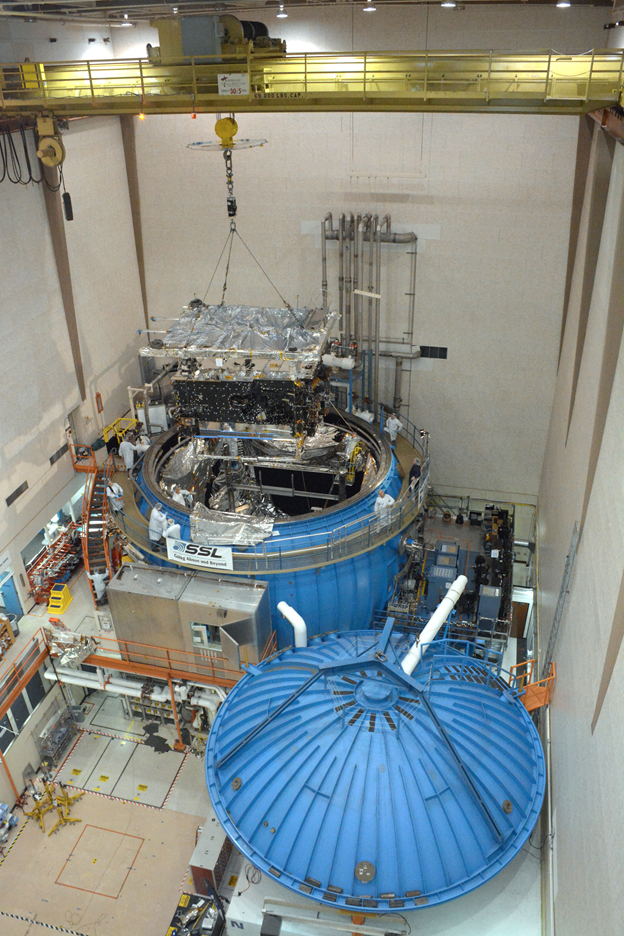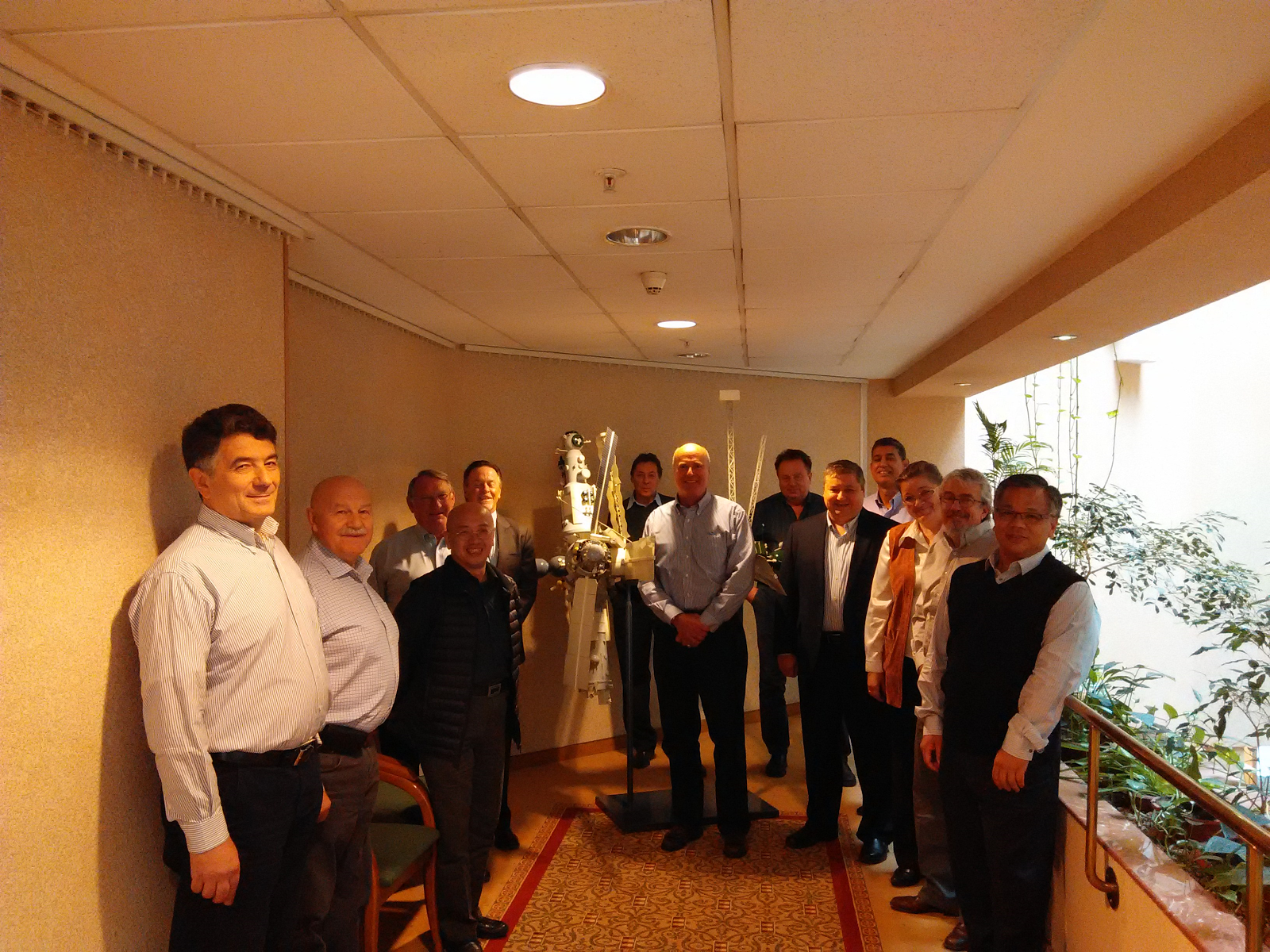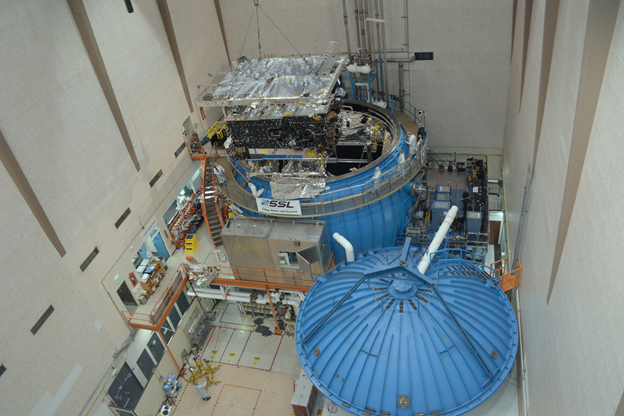The AsiaSat 9 spacecraft is hoisted to the Space Thermal Vacuum Simulation test chamber.
AsiaSat 9 enters a thermal vacuum chamber for testing, after completing a rigorous assembly and ambient temperature test program.
Once the installation of the spacecraft has been completed, the large blue lid will be secured on the chamber to create a vacuum sealed controlled environment. Different thermal environment scenarios are then simulated to test the satellite performance over expected beginning and end-of-life temperature limits (with margin).
Over the course of several weeks AsiaSat 9 is exposed to various temperature environments and extensive testing to verify performance of all subsystems.

What is a thermal vacuum test?
A TVAC test, or Thermal Vacuum Chamber test is used to demonstrate whether a spacecraft can perform within specifications over the anticipated thermal environment in the vacuum of space. It also provides a window to assess the functional performance in a simulated space environment to confirm that the design is technically sound and workmanship is of good quality.
Critical Design Review (Launch Vehicle)
AsiaSat 9 Proton Launch Vehicle Critical Design Review (CDR) was conducted in Moscow on 13 and 14 October 2016.

Representatives from launch service provider (ILS and KhSC), satellite manufacturer (SSL) and AsiaSat Engineering and Consultant Team participated in the meeting.
All technical discussions went smoothly and all parties agreed that the CDR was a success.
If you would like to learn more about AsiaSat satellites please visit our fleet page.
